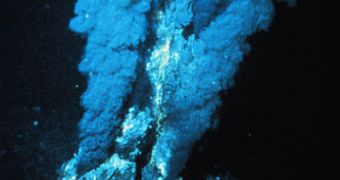Until not long ago, researchers thought that they had figured out the roots of life, at least in terms of how organisms produced energy. They argued that the method was purely chemical, in that living things used ATP (adenosine triphospate) to get their supplies. However, only a couple of decades ago, one expert showed that the energy-production methods in all living things were a bit more complicated than that. At the time, his ideas were shun and received skeptically, but now a growing number of researchers is starting to rally behind the idea, NewScientist reports.
The theory, which its creator called chemiosmosis, essentially works in a roundabout sort of way. Peter Mitchell (Nobel Prize winner in 1978) believes that the energy fueling life is not obtained from a set of standard chemical reactions that a group of experts could replicate in a test tube, but from a kind of electricity, moving around the cell. Instead of the ATP explanation, he proposes that the energy the body obtains from food is used to pump positively charged hydrogen ions (protons) through cellular membranes. As the protons agglomerate on the other side, they fill an electrochemical gradient on the inside walls.
If they are given the chance, the protons will then flow back to the outside of the cell, powering up the ATP production process. In the other explanation, to which most scientists still adhere, the ATP molecules are recreated from food energy, through a series of simple chemical reactions. In spite of its seemingly bizarre nature, the process is more ubiquitous in nature than anyone might have imagined. Not only cellular processes are driven by it, but photosynthesis as well, and the latter process is one of the most important there is. Because plants oxygenate the air through it, we are able to live and breath today.
But the real groundbreaking news that this line of thought brings forth is the fact that all life on Earth may have a common ancestor, a single organism. When drawing the Tree of Life, the basic split emerges between bacteria and archaea, two groups of single cells. But both of these types of microorganisms had proton pumps, and both generated ATP from proton currents. This can only mean that they shared a common ancestor, the precursor of all life on Earth. This precursor has to have had DNA, RNA, proteins, ribosomes, ATP, and a proton-powered enzyme for producing ATP – in short, a cell.

 14 DAY TRIAL //
14 DAY TRIAL //